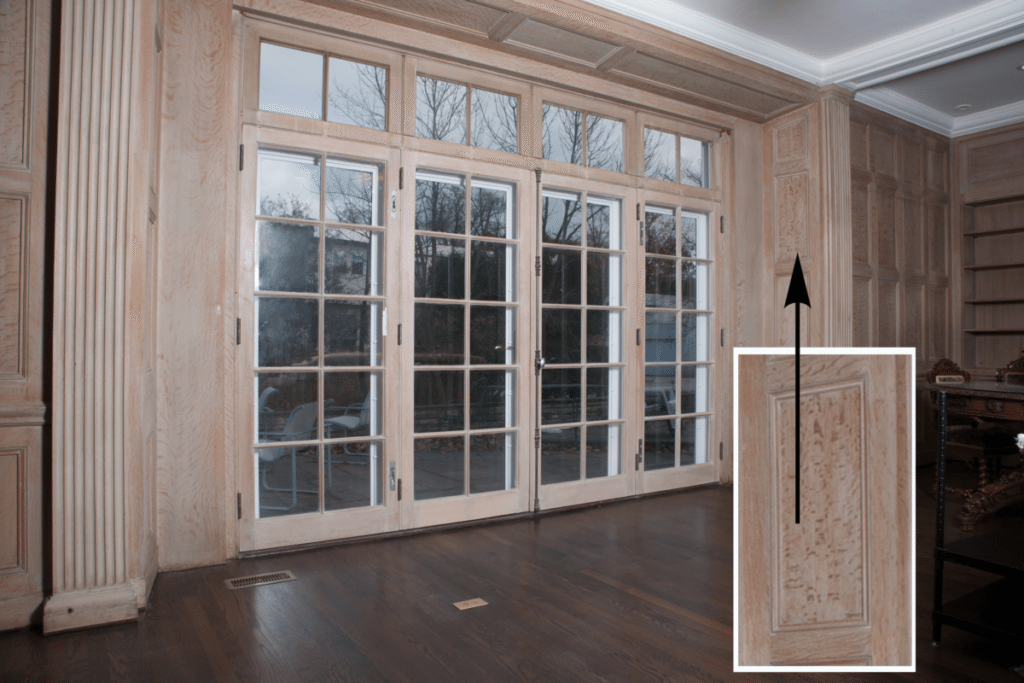Coloring Wood
There’s more to stain THAT meets the eye

When this Certified Landmark residence was renovated by Samuel Marx in the mid-thirties, the walls of this large library were pickled. (Though no record is available, the assumption is that this coating was applied to lighten the appearance of the wood paneling which covers the entire wall surface, including built-in bookcases and pillars.) As the photo indicates, though, the pickling has worn thin.
While the photo doesn’t do it justice, the overall impact of this “distressed pickled finish” is rather pleasing. As a future project, the clients intend to have us return to touch it up, but the immediate problem we had to deal with were these two sets of french doors. We had to completely rebuild them and, in the process, we were unable to preserve the unstable pickled finish on their interior surfaces. Before reinstalling them, then, we needed to reproduce the slightly distressed pickled finish on the doors.
In new construction, one has a fresh canvas. Any wood coloration is often as simple as opening a can of a proprietary stain. But as this project demonstrates, and as was also the case with the vinegar-steeped-in-steel- wool concoction we created to achieve an ebony stain on the stairs of a Kenwood residence, restoration work often requires reaching beyond conventional stain products to employ creativity in creating custom-mixed treatments to achieve the desired results.
Having an understanding of the full range of historical methods of coloring wood–reaching from fuming to a fake impression of wood created with tool-manipulated glazes and toner coats (called faux bois)–helps quite a bit. Drawing on our training in the decorative painted finishing tradition as well as decades of study and experience, Oak Brothers has the knowledge and skill base that is needed for this complex task, including the ability to create our own, custom stain mixtures.
